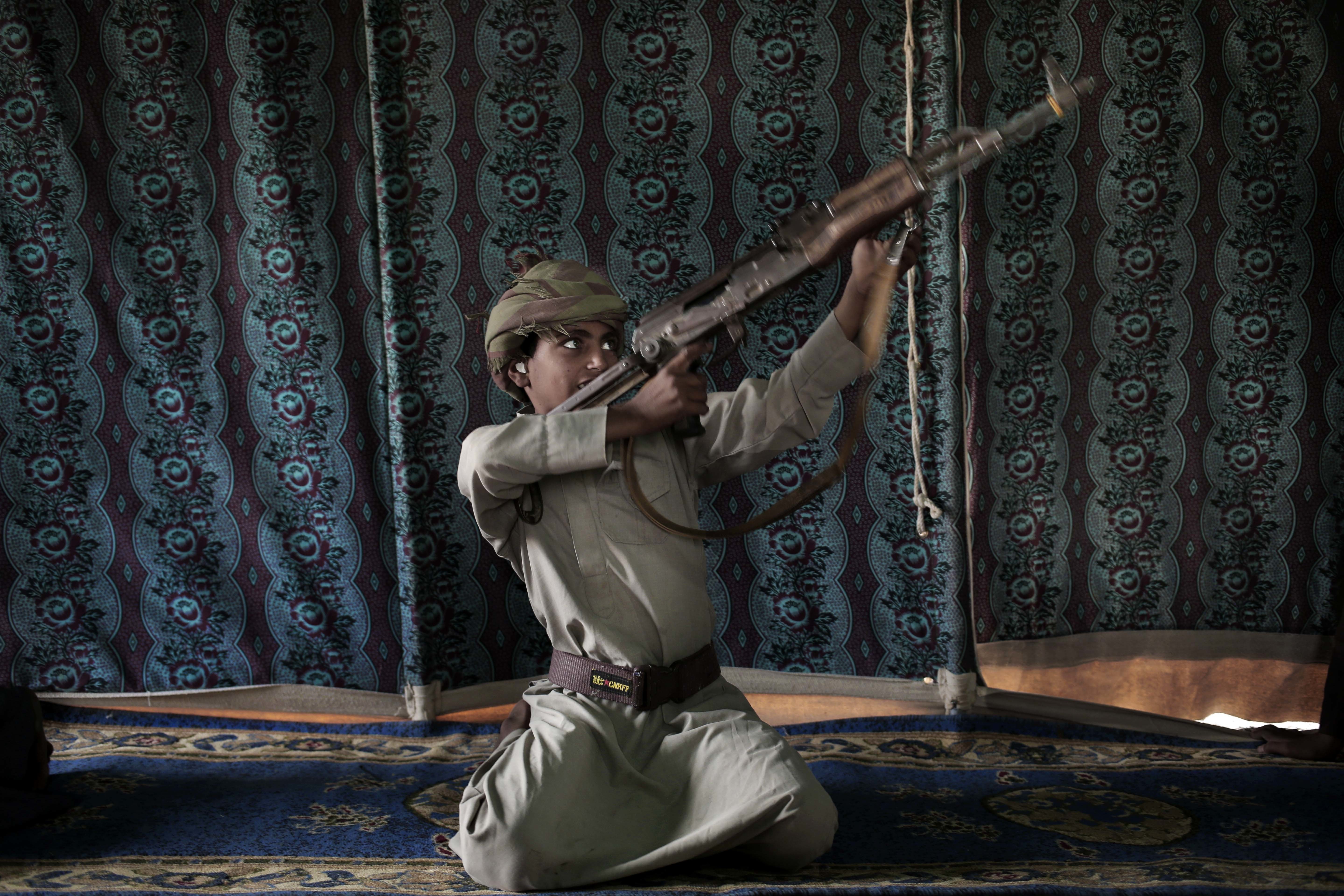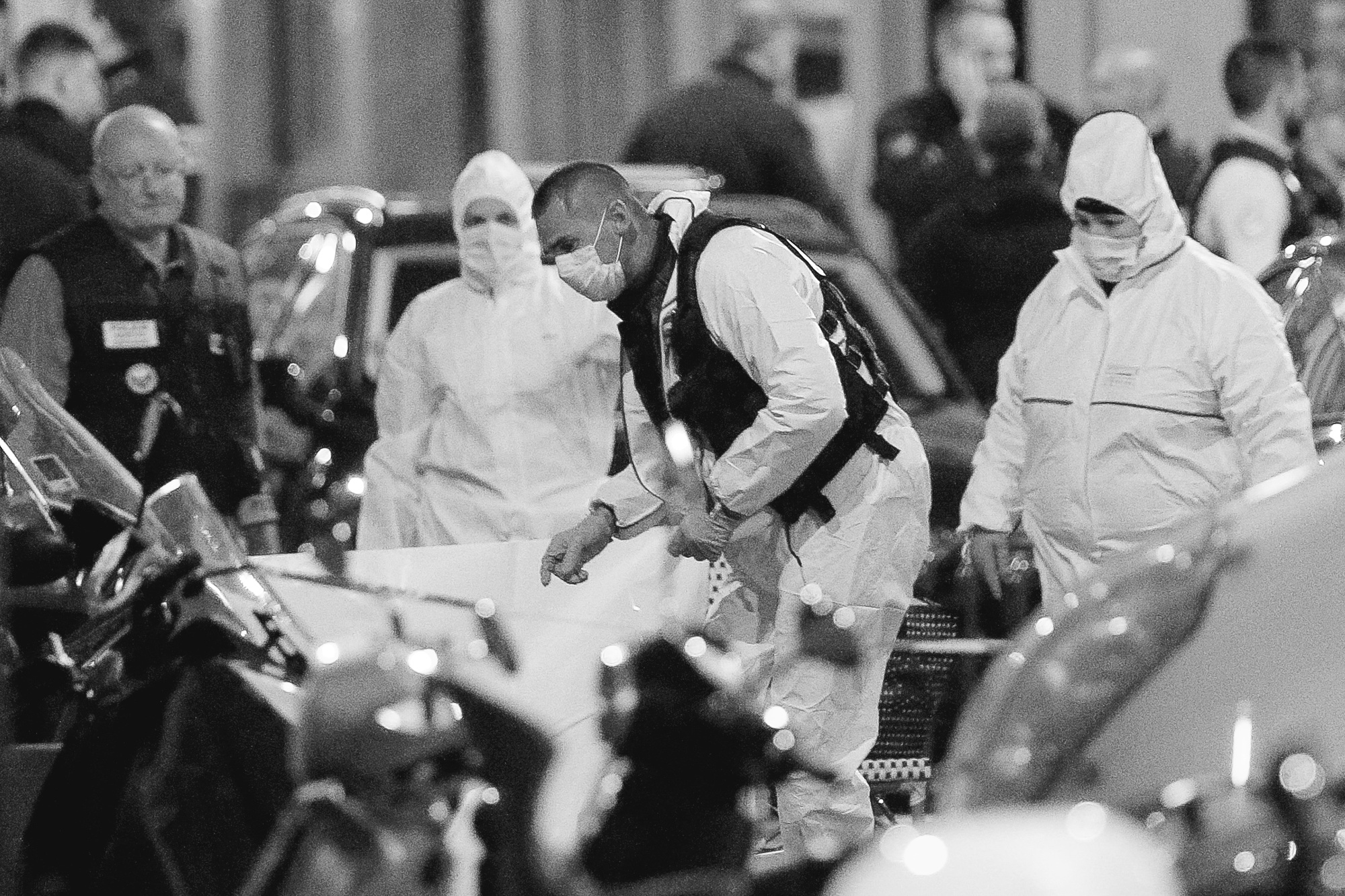
By MAGGIE MICHAEL
Associated Press
MARIB, Yemen (AP) — At the age of 13, Mohammed was an unflinching fighter for Yemen’s Houthi rebels. Indoctrinated in their camps, he went into battle even as gunfire filled the air and the earth shook from airstrikes. He says he tortured and killed. He didn’t care if he lived or died.
His one comfort was the serial number on the bracelet the Houthis gave him to wear — his “jihadi number.” If he died, he knew, the bracelet guaranteed his body would make it home to his family. “When I become a martyr, they enter my number in the computer, retrieve my picture and my name, then print them with the name ‘Martyr’ underneath,” Mohammed said.
Mohammed was among 18 former child soldiers interviewed by The Associated Press who described the Houthis’ efficiency in recruiting boys as young as 10 to fight in the war against a military coalition led by Saudi Arabia and backed by the United States. The Houthis have inducted 18,000 child soldiers into their army since the beginning of the war in 2014, a senior Houthi military official acknowledged to The Associated Press. He spoke on condition of anonymity due to the sensitivity of the information.
That figure is higher than any number previously reported. The United Nations was able to verify 2,721 children recruited to fight for all sides in the conflict, the large majority for the Houthis, but officials say that count is likely low. An unknown number of young fighters have been sent home in coffins. More than 6,000 children have died or been maimed in the war, the U.N. children’s agency reported in October, but it could not determine how many were combatants.
Brig. Gen. Yahia Sarie, a Houthi military spokesman, denied that children under 18 are systematically recruited and told the AP that the military has issued orders to send home children trying to join its ranks. He said any children who try to enlist do so out of anger at coalition atrocities. He dismissed the accounts the children gave to the AP, saying their claims were coalition propaganda.
The AP interviewed the former child soldiers at displacement camps and a Saudi-funded rehabilitation center in the city of Marib, which is controlled by the coalition. They came to Marib after slipping away from rebel forces or being captured by coalition units. Because of their ages and because some acknowledge committing acts of brutality, the AP is only using their first names.
The war began after the Houthis, a Zaidi-Shiite insurgent movement with ties to Iran, swept down from the northern highlands in late 2014, seizing the capital, Sanaa, and then pushing south. Yemen’s internationally-recognized government sought help from Saudi Arabia, which formed the coalition with U.S. backing, determined to stop what they saw as an Iranian move to take over, turning a civil war into a proxy war.
Young soldiers can be seen manning checkpoints, AK-47s dangling from their narrow shoulders. Others are sent to the front lines as foot soldiers. Some of the children told the AP they joined the rebels willingly, mainly because of promises of money or the chance to carry a weapon or to have a guaranteed allotment of qat, the leaves that Yemenis chew as a stimulant. But others described being abducted from schools or homes or coerced into joining in exchange for a family member’s release from detention.
Recruits are taken first to “culture centers” for nearly a month of religious courses. The children are told they are joining a holy war against Jews and Christians and Arab countries that have succumbed to Western influence. Next, the recruits are sent to military training camps, and then to war. “When you get out of the culture center, you don’t want to go home anymore,” Mohammed said. “You want to go to jihad.”
Mohammed recalled how one day his comrades fighting in the city of Taiz captured a coalition fighter and brought him to a bombed-out restaurant. Mohammed, 14 at the time, said he hooked an electrical generator up to the prisoner and sent shocks through the man’s body as his commander interrogated the captive.
Finally, his commander gave this order: “Get rid of him.” Mohammed said he took a heavy metal tool, heated it in a flame, then swung it, caving in the back of the man’s head. “He was my master,” Mohammed said of his commander. “If he says kill, I would kill…. I would blow up myself for him.”
A 13-year-old named Riyadh said half of the fighters with him on the front lines were children. He said he and his 11-year-old brother once shot and killed two enemy soldiers who refused to lay down their weapons. More often, he said, he closed his eyes tightly out of fear when he fired his rifle.
The most frightening moment came when his brother disappeared during a firefight. He began turning over corpses on the battlefield, searching bloodied faces for his lost brother, when he and other fighters came under fire. They fired back. Then, after some yelling back and forth, he realized the shooter was his brother, lost in the fog of battle.
A 12-year-old named Kahlan said Houthi militiamen took him and 10 of his classmates from school, promising them new book bags. Instead, they found themselves inside a training camp, still in their school uniforms. On the front lines, Kahlan recalled the trucks rumbling in to collect the dead after coalition airstrikes. “The sight of the bodies was scary,” he said, using his hands to pantomime how corpses were missing heads or limbs or had their intestines oozing out.
The Marib rehabilitation center has treated nearly 200 boys since September 2017. They suffer from aggressive behavior, panic attacks and attention deficits. Naguib al-Saadi, founder of the organization that launched the center, said the real problem will be felt in 10 years — “when a generation that has been brainwashed with hatred and enmity toward the West comes of age.”
















